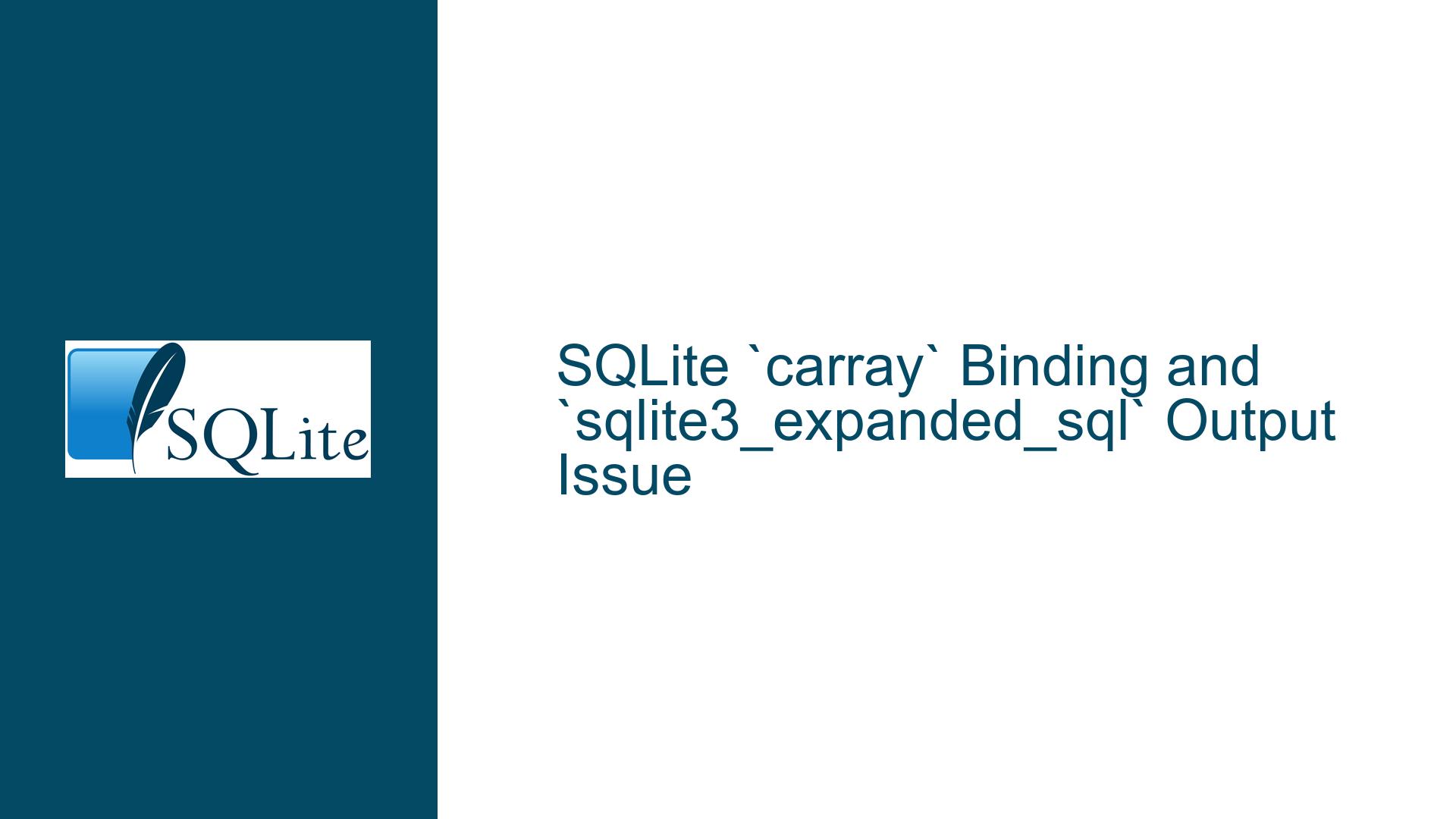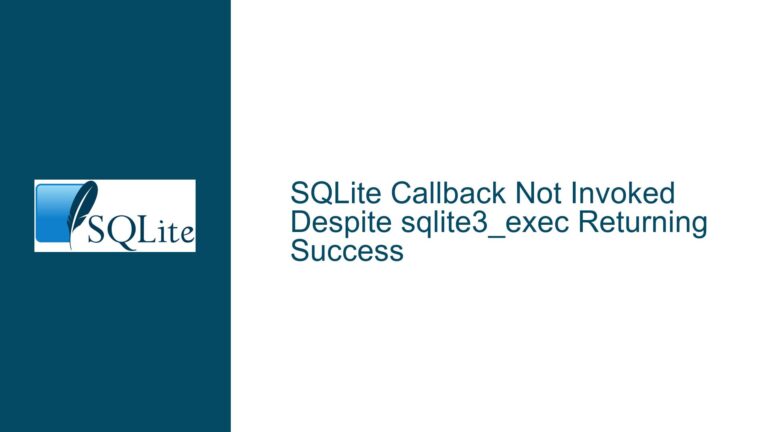SQLite `carray` Binding and `sqlite3_expanded_sql` Output Issue
carray Binding Displays as NULL in sqlite3_expanded_sql
When using SQLite’s carray extension in conjunction with parameterized queries, developers may encounter a situation where the output of sqlite3_expanded_sql displays carray(NULL) for the bound parameter, even though the query executes correctly and returns the expected results. This behavior can be confusing, especially when debugging or logging SQL queries. The issue arises from the way SQLite handles pointer bindings internally and how sqlite3_expanded_sql interprets these bindings.
The carray function is a table-valued function that allows binding an array of values to a SQL query. It is commonly used in scenarios where you need to pass a list of values (e.g., a list of tags or IDs) to a query. The sqlite3_carray_bind function is a convenience wrapper around sqlite3_bind_pointer, which binds a pointer to a parameter in a prepared statement. However, when sqlite3_expanded_sql is used to generate a human-readable representation of the query, the bound carray parameter appears as NULL.
This behavior is not a bug but rather a design choice in SQLite to ensure security and prevent unintended pointer dereferencing. Understanding why this happens and how to work around it is crucial for developers who rely on sqlite3_expanded_sql for debugging or logging purposes.
Pointer Binding Security and sqlite3_expanded_sql Limitations
The root cause of the carray(NULL) output in sqlite3_expanded_sql lies in SQLite’s handling of pointer bindings and the security mechanisms in place to prevent misuse. When sqlite3_carray_bind is used, it internally calls sqlite3_bind_pointer, which associates a pointer with a parameter in the prepared statement. However, the SQL value of the parameter is set to NULL to ensure that the pointer cannot be accidentally dereferenced or misused.
The sqlite3_expanded_sql function is designed to generate a human-readable SQL string with all bound parameters expanded. However, it does not have the capability to interpret pointer bindings, as doing so could expose sensitive memory addresses or lead to security vulnerabilities. As a result, any parameter bound using sqlite3_bind_pointer (or its convenience wrapper, sqlite3_carray_bind) will appear as NULL in the output of sqlite3_expanded_sql.
This behavior is documented in SQLite’s pointer passing interface, which states that the sqlite3_bind_pointer routine causes the bound parameter to have an SQL value of NULL while still associating it with the specified pointer. The pointer type (e.g., "carray") is used internally to ensure that only functions expecting that specific type of pointer can access it.
Alternative Binding Methods and Debugging Strategies
While the carray(NULL) output in sqlite3_expanded_sql is expected behavior, developers can adopt alternative binding methods and debugging strategies to work around this limitation. One approach is to use explicit parameter binding for each element of the array, rather than relying on sqlite3_carray_bind. For example, instead of using carray(?), you can use carray(?,?,?) and bind each parameter individually using sqlite3_bind_pointer, sqlite3_bind_integer, and sqlite3_bind_text.
Here is an example of how to bind parameters explicitly:
sqlite3_bind_pointer(stmt, 1, tag_list, "carray", SQLITE_STATIC);
sqlite3_bind_integer(stmt, 2, 10);
sqlite3_bind_text(stmt, 3, "char*");
In this example, tag_list is the array of values, 10 is the count of elements in the array, and "char*" specifies the type of the array elements. While the pointer will still appear as NULL in the output of sqlite3_expanded_sql, the other parameters (count and type) will be displayed correctly, providing more context for debugging.
Another approach is to use the carray function without parentheses and pass the parameters as constraints in the WHERE clause. For example:
SELECT id, name, path
FROM media
WHERE id IN (
SELECT media_id
FROM media_tags
WHERE tag_id IN (
SELECT id
FROM tags
FROM carray
WHERE pointer = ? AND count = ? AND ctype = ?
)
GROUP BY media_id
HAVING count(media_id) = ?
);
In this case, the carray function is treated as a table-valued function, and the parameters are passed as constraints. The pointer will still appear as NULL in sqlite3_expanded_sql, but the query structure will be more explicit, making it easier to understand and debug.
For developers who need to log or debug queries with carray bindings, it is recommended to manually construct the SQL string with the array values included, rather than relying on sqlite3_expanded_sql. This approach ensures that the logged query accurately reflects the intended input, even though it requires additional effort.
In summary, the carray(NULL) output in sqlite3_expanded_sql is a result of SQLite’s security mechanisms and the limitations of pointer binding. By using alternative binding methods and adopting manual debugging strategies, developers can work around this limitation and ensure accurate query logging and debugging.






